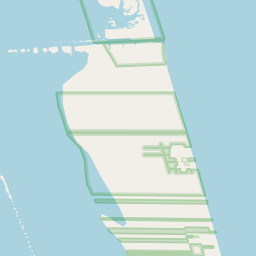San Juan De Carricitos Land Grant
Historical marker location:






The largest land grant in South Texas, the San Juan de Carrictios lands were awarded to Don Jose Narciso Cavazos in 1792 by the King of Spain. Comprising over one-half million acres, the grant included virtually all of present Williacy County, including the sites of the towns of Sebastian, Lyford, Raymondville, Lasara, San Perlita, and Port Mansfield. In 1793 Cavazos took formal possession of the land grant seven miles north of this site. Most of the grant was later sold by Cavazos' heirs, although some descendants still live within its boundaries. (1988)
As one of the most visible programs of the Texas Historical Commission (THC), historical markers commemorate diverse topics in Texas history, including: the history and architecture of houses, commercial and public buildings, religious congregations, and military sites; events that changed the course of local and state history; and individuals who have made lasting contributions to the state, community organizations, and businesses.
Texas was once an independent country: After winning its independence from Mexico in 1836, Texas became its own country, known as the Republic of Texas. It existed as an independent nation for nine years before being annexed by the United States in 1845.
The area was primarily inhabited by indigenous people for centuries before European colonizers arrived in the 18th century. The Spanish explorers and missionaries had a significant influence on the region, establishing several missions and ranchos. The impact of Spanish colonization can still be seen in the county's numerous Spanish place names.
During the 19th century, settlement began to increase with the arrival of European and American settlers. Agriculture, especially cotton farming, became the backbone of the county's economy. The development of railroads in the late 1800s further encouraged growth, as transportation became more accessible. The completion of the St. Louis, Brownsville and Mexico Railway in the early 1900s played a crucial role in connecting Willacy County to other parts of the state and the country, leading to further economic expansion.
In the mid-20th century, the county's economy underwent a major shift from agriculture to oil and gas production. The discovery of oil and the establishment of oil fields brought jobs and prosperity to the area. Alongside the oil industry, the county also became known for its livestock production and tourism, with its proximity to the Gulf of Mexico making it a popular vacation destination. Today, Willacy County continues to evolve, with a diverse economy that includes agriculture, energy, tourism, and manufacturing.
Willacy County Timeline
This timeline provides a glimpse into the major events and milestones that have shaped the history of Willacy County, Texas.
- 1829: Mexican land grants are awarded in the area that is now Willacy County.
- 1836: Texas gains independence from Mexico.
- 1850s: Settlers begin to establish farms and ranches in the area.
- 1856: The community of Santa Monica is established.
- 1875: The town of Willacy is founded.
- 1881: The St. Louis, Brownsville and Mexico Railway reaches the area.
- 1911: Willacy County is officially formed from parts of Cameron and Hidalgo Counties.
- 1921: A hurricane devastates the area, causing significant damage and loss of life.
- 1930s: The region experiences an economic boom due to the discovery of oil and natural gas.
- 1962: The Raymondville Detention Center is established as the first privately operated immigration detention center in the United States.